WELCOME!
 Sunday, May 5, 2013 at 12:15PM
Sunday, May 5, 2013 at 12:15PM 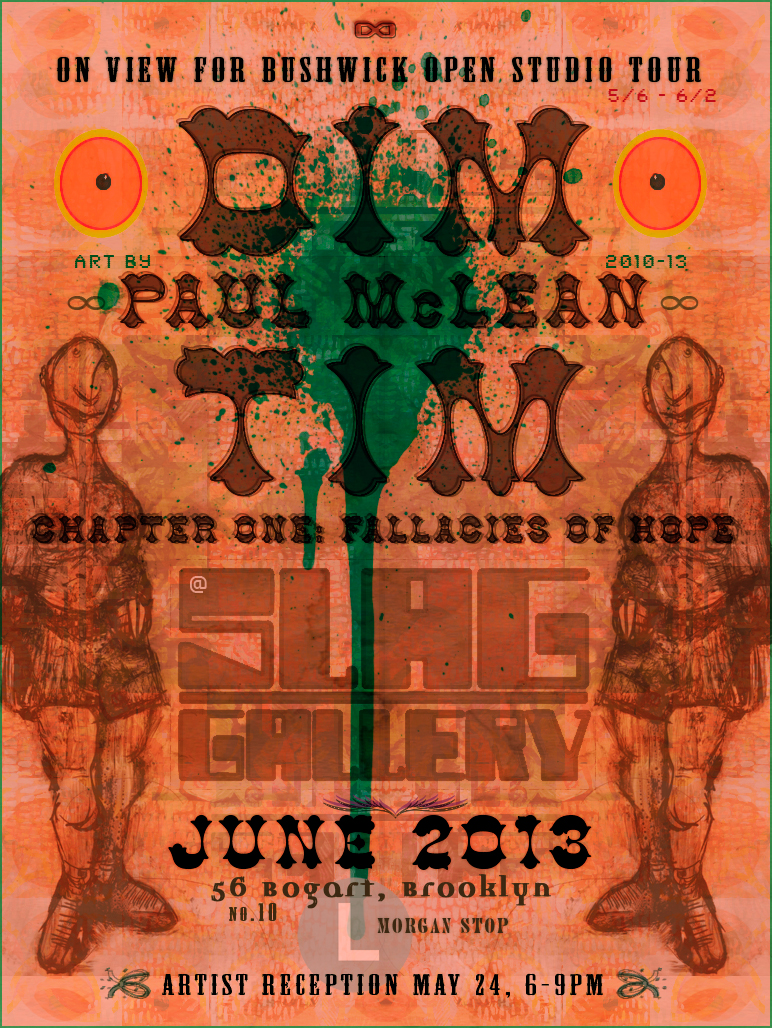
May 1, 2013
PRESS RELEASE
[FOR IMMEDIATE RELEASE IN ALL MEDIA]
SLAG Contemporary Gallery is pleased to present “DIM TIM,” an exhibition of paintings by Brooklyn-based artist Paul McLean. “DIM TIM” opens with a reception for the artist Friday, May 24th from 6-9PM, and continues through June. “DIM TIM” will be on view for Bushwick Open Studios Tour 2013, Friday, May 31st, Saturday, June 1st and Sunday, June 2nd. SLAG and the exhibiting artist will host additional events and programming in conjunction with the “DIM TIM” exhibit (TBA).
SLAG CONTEMPORARY
56 Bogart, Ground Floor
Brooklyn, NY 11206
Telephone: (212) 967-9818
FAX: (212) 967-9819
Email: info@slaggallery.com
Website: www.slaggallery.com
By Subway: L Train to Morgan
Business Hours: Thursday-Saturday 1-6PM, Sunday by appointment only
ABOUT THE ARTIST
Paul McLean is a graduate of the University of Notre Dame (1986, BA English, concentration in Fine Art), holds Masters Degrees in Fine Arts (2007, MFA Digital Media) and Arts and Cultural Management (2009, MAACM) from Claremont Graduate University, and is currently pursuing a doctoral course at The European Graduate School in Saas-Fee, Switzerland in Media Philosophy. Over the past thirty years he has produced solo and collective art exhibits in the United States and abroad for galleries, museums, foundations, educational institutions and alternative art spaces. He works in both analog and virtual media. His interests include dimensional phenomena, complex communications systems, production topologies and architecture, integrated military, economic and social matrices and iterative representation. McLean has written extensively on these subjects, publishing his texts through periodicals like Brooklyn Rail and, since 1999, the Art for Humans network of online channels. He maintains public archives of his moving and still images on the web.
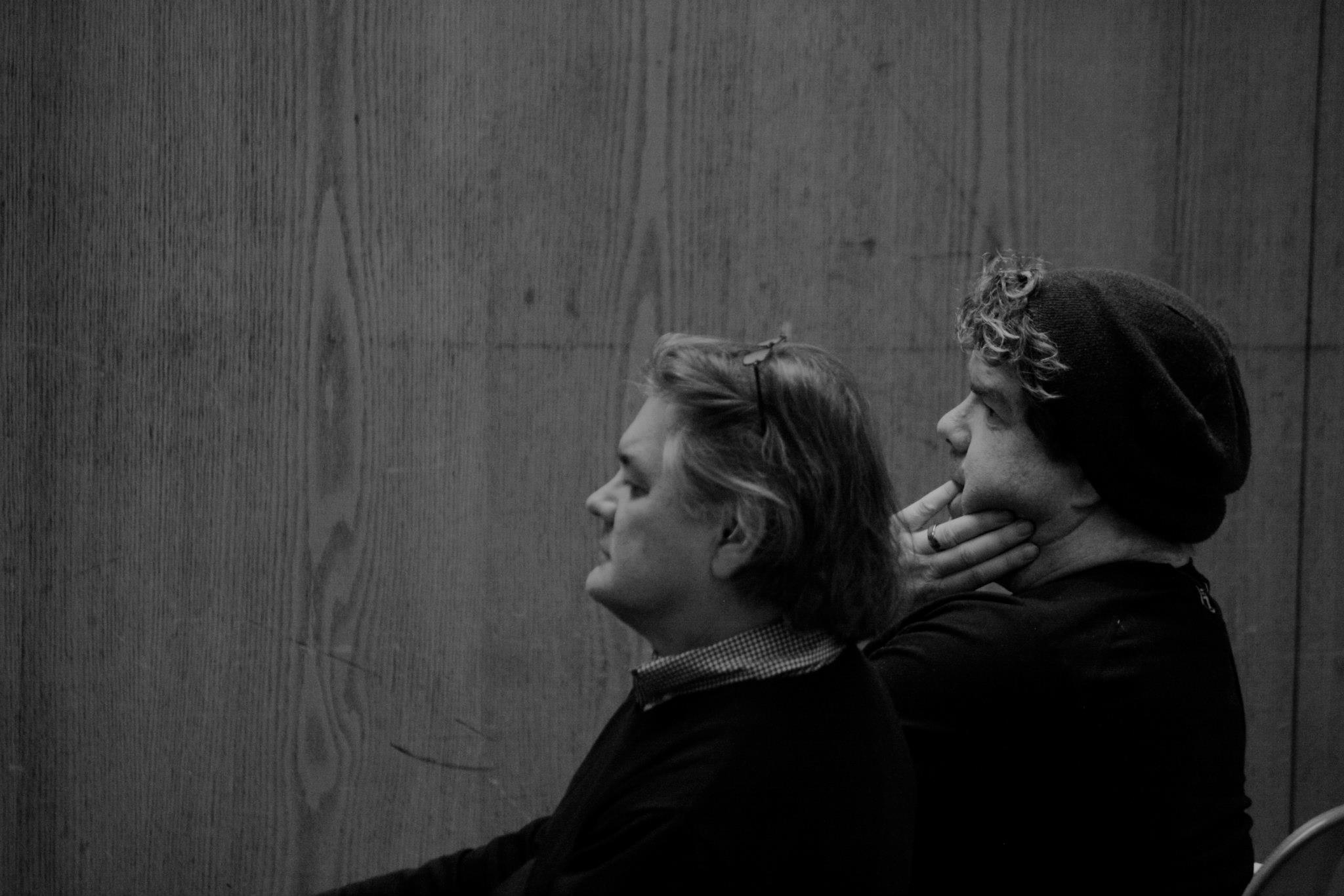 Photo by Öykü Tekten 2013 NYC with Joseph Nechvatal and Paul McLean at the 4th annual Cyber-Nietszche conference at the New School.
Photo by Öykü Tekten 2013 NYC with Joseph Nechvatal and Paul McLean at the 4th annual Cyber-Nietszche conference at the New School.
ABOUT “DIM TIM”
By Milo Santini
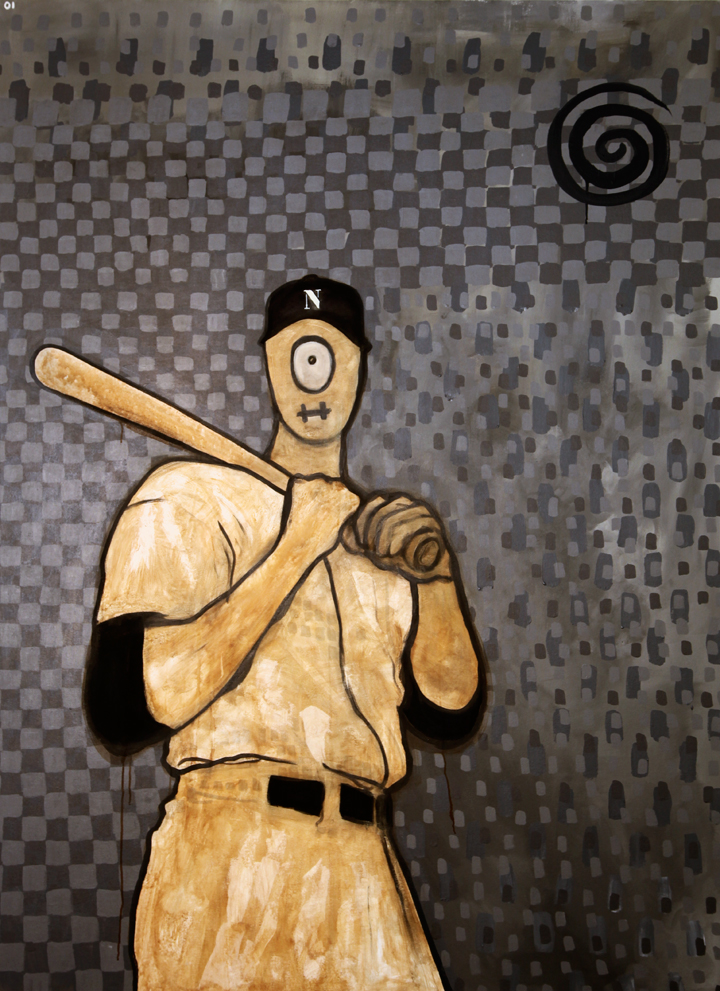 "Hero" 84" x 60" acrylic and ink on canvas 2013
"Hero" 84" x 60" acrylic and ink on canvas 2013
Bushwick-based artist Paul McLean first etched his signature Cyclops figure in 1984 into the wet black ink on a silkscreen support board. The Cyclops peered quizzically from the picture plane at the viewer, standing at attention by a Revolutionary War era bulwark, holding a musket with bayonet attached, a massive spiral spinning overhead. McLean recalls the episode as critical turning point for him as an artist, the moment he commenced to call himself a “4D artist,” long before 4D achieved the aesthetic currency it enjoys today.
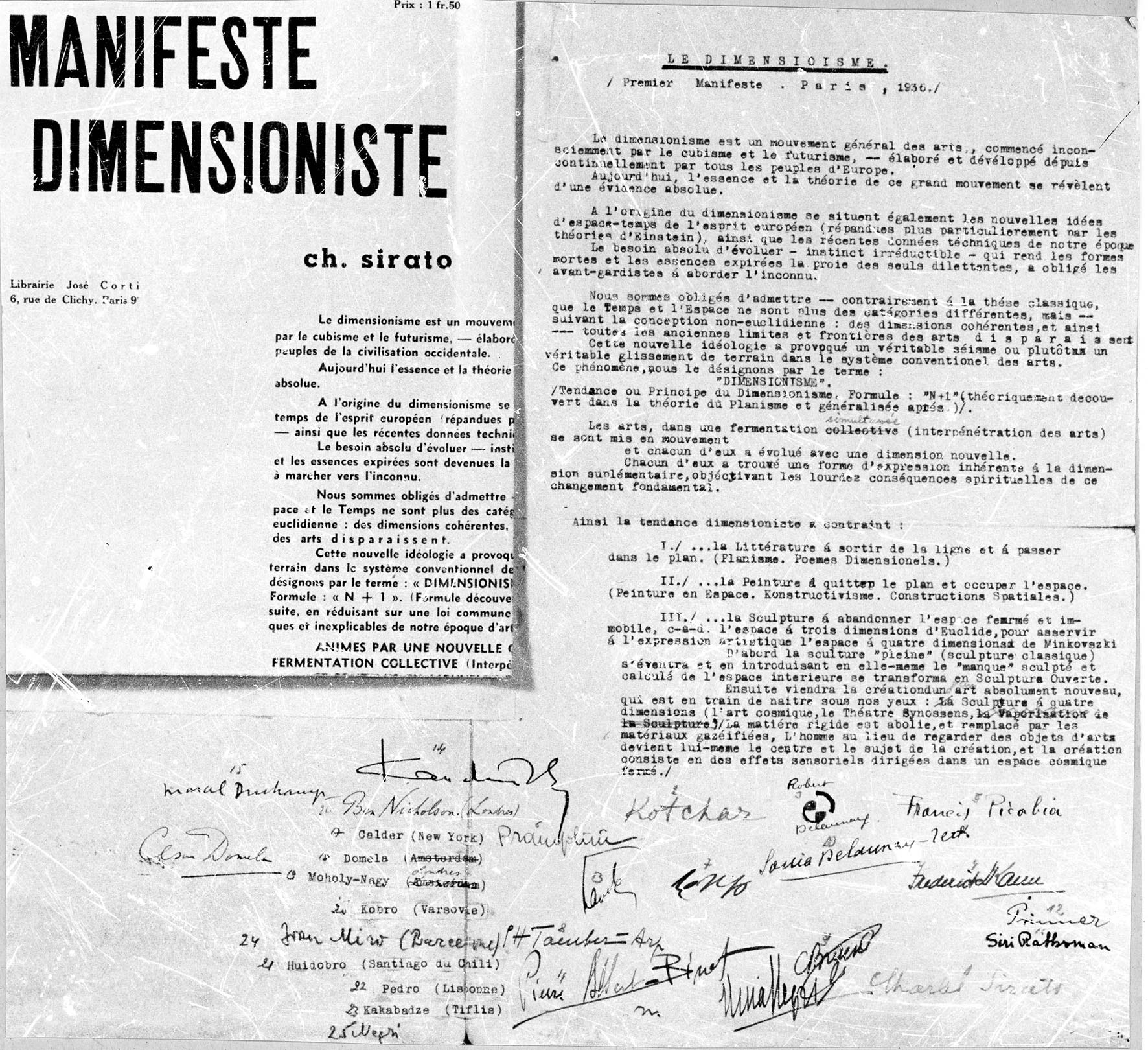 The original Dimensionist Manifesto (1936)
The original Dimensionist Manifesto (1936)
McLean’s trajectory as a contemporary Dimensionist artist and the dimensional trajectory of this odd, mildly disquieting Cyclopean creation facilely toggling between actual and -ware mediums, have been intertwined ever since, like strands of DNA or flip sides of a single coin. Indeed, the artist and his monoptic subject have periodically dissolved or blurred the existential boundaries that traditionally separate the maker and his craft work or content, upgrading the autoportrait format for the ubiquitously digital, mediated age we live in, today. For McLean, Dim Tim provides multiple-choice answers to complex questions of content, context and authorship.
∞
“One thing is sure – we have to transform the three-dimensional world of objects into the two-dimensional world of the canvas… …To transform three into two dimensions is for me an experience full of magic in which I glimpse for a moment that fourth dimension which my whole being is seeking.” - Max Beckmann [Max Beckmann: On my Painting”, Tate Publishing London, 2003, p. 16 (http://www.quotes-famous-artists.org/max-beckmann-famous-quotes)]
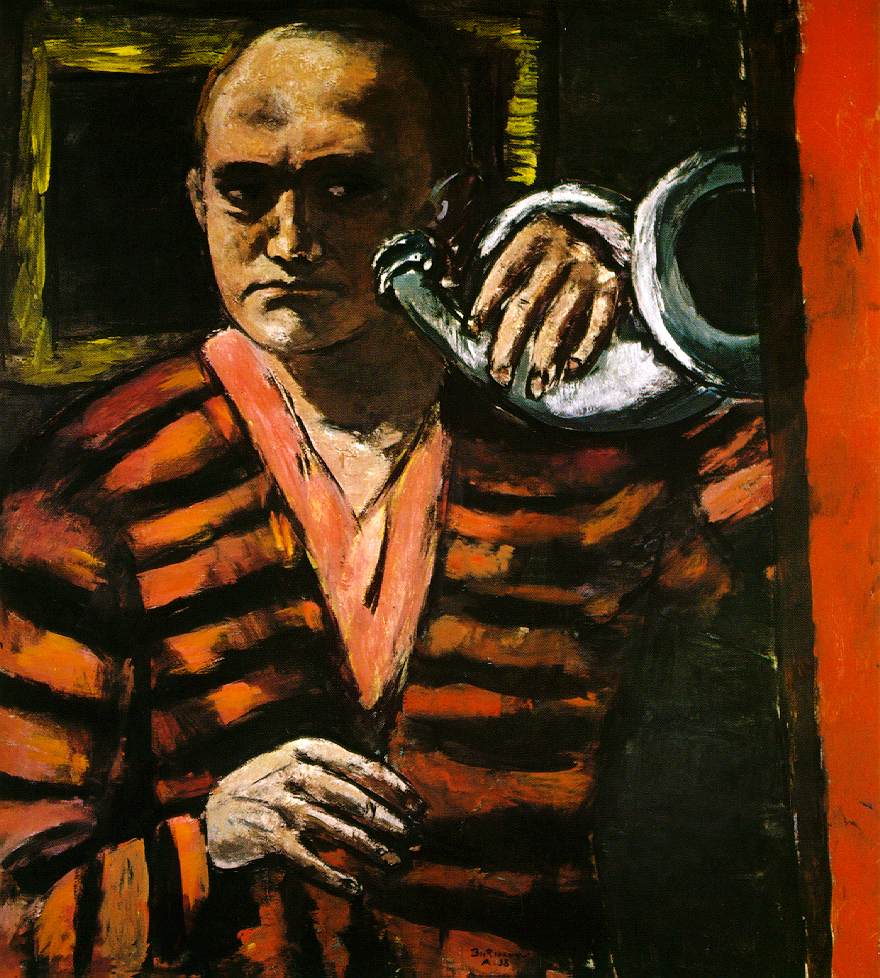 Max Beckmann "Self-portrait with Horn" 1938-40
Max Beckmann "Self-portrait with Horn" 1938-40
Who – or what – is Dim Tim? The cartoonish monocular character - the oval bald head, unblinking eye and sewn-closed slit of a mouth - has evolved over the past three decades in McLean’s multimedia art, emerging in mature form as Dim Tim, a 4D Everyman. Throughout this progression, Dim Tim has appeared consistently, like Hitchcock popping up in his own movies, in front of the camera, not as a director, but as a bit actor. But Dim Tim suggests a deeper conceptual framework, owing as much to Baudrillard as he does to meta-practitioners: early 4D artists like Max Beckmann, theatrical 4th-wall-shatterers like Bertolt Brecht, filmmakers like Hitchcock who translate that phenomenon to the movies, and writers like William Faulkner, who sought to expand the author’s power to translate point-of-view significantly in all directions, to make transparent to the reader the internal and invisible domains of fiction.
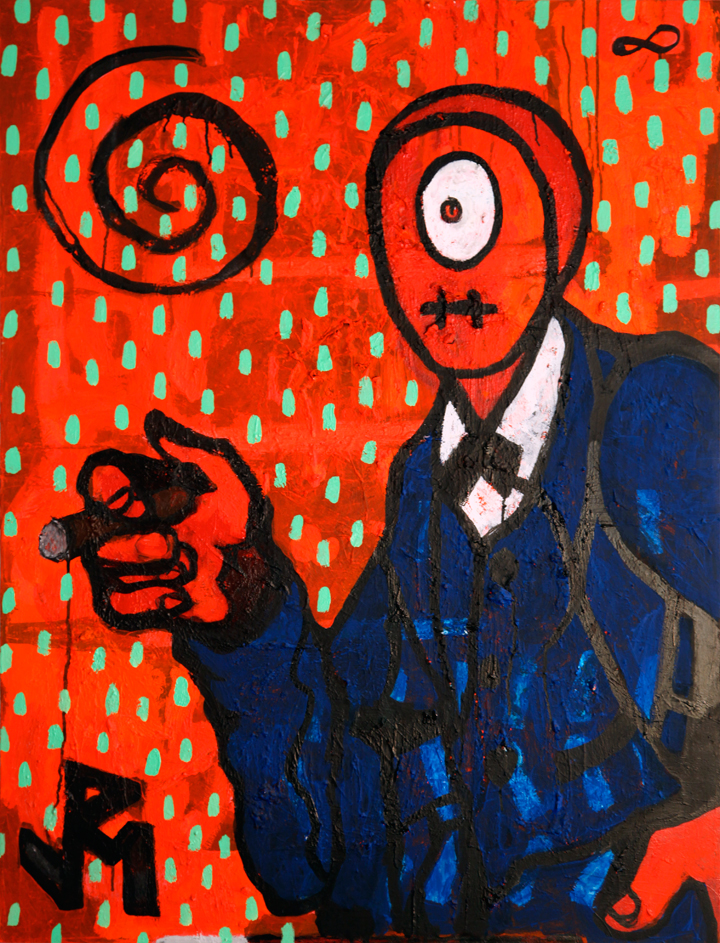 "Sigmund" 48" x 36" acrylic and ink on canvas
"Sigmund" 48" x 36" acrylic and ink on canvas
Dim Tim advances a new speculative layer on representation and pictorial realism. He disorients humanism in a pixilated iteration of life, dislodging the orders of time and space from modes of perception in which they are down-shifted into the mundane, manageable or routine. The “Other” has never been so problematic, when we consider Dim Tim as a test case or anomaly. As Novad and Revolutionary Gamer Alexandre Carvalho wrote:
Dim Tim is the personification (the Artificial Personification, an extension of the hyperreal, what would come naturally after Artificial Intelligence and Virtual Reality). Dim Tim is a hero & an anti-hero at the same time. DT is talking to us from the locus of a digitalized life. How much of Dim Tim is a monstrosity? How much of it is exactly what makes us human? The connections with Wizard of Oz and Tin Man [Tim Man] are inevitable.
Now, Dim Tim, who has often shown his weird face in McLean’s painting series and digital work, in the SLAG Contemporary exhibit bearing his name and subtitled “Fallacies of Hope,” assumes the starring role in the narrative arc. Comic historical cinema is an influence here, and Dim Tim manifests as multiplicity personified, echoing Peter Sellers and Jonathon Winters at their hilarious and fungible finest, or as a man of his times, Zeitgeist embodied (on film), like Woody Allen in Zelig, Sellers in Being There, or Tom Hanks in Forrest Gump. Dim Tim shines as Freud, as Napoleon, as a Yankee titan. The role of Dim Tim, though, is not reducible to dress-up play. He is not just a stylized figuration, a cut-out. He more than just a combination of Baldachuk’s Napoleon at Borodino, scanning the carnage of Borodino in the epic War and Peace, and David’s Napoleon, heroically perched on his white steed. Dim Tim pushes though bathos and the suspension of time. He in some measure curates his own representation with the self-consciousness of a veteran stage performer: for instance, he mugs for the viewer; apparently relishes close-ups and candid turns; and flexes in his poses. He strays into the sphere of sacred clown. He penetrates the moment as an assessor, albeit one installed in place, static, but containing the potential of being animated. These types of self-reflective or model moves imply his awareness of his own subjectivity as focal image. He seems comfortably prepared for a snapshot, or the still, and simultaneously captured, as a combination of form solid in time and yet movable, of time’s action. In short, he is at ease with the Gaze, and even may be up for a mimetic confrontation with it (and the artist or viewer), but he rarely satisfied with enslavement to it. In some paintings, Dim Tim is menacing, threatening, his animus not directed at some Other within the painted universe he inhabits, but at Us, the Gazers!
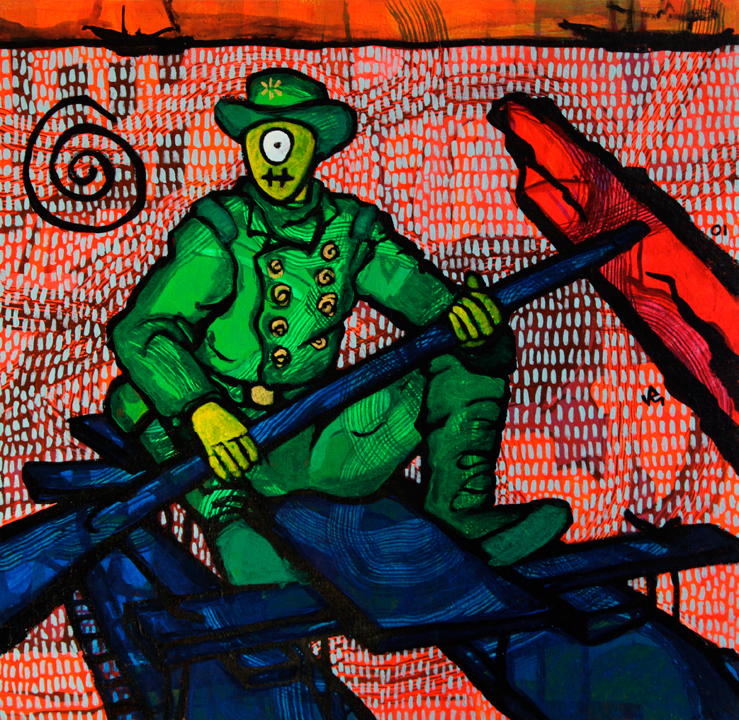 "Rafter" 24" x 24" acrylic and ink on canvas
"Rafter" 24" x 24" acrylic and ink on canvas
Joseph Nechvatal’s recent Noise works, which now have eloped or elided to the domain of the “figure [on or in] abstraction,” give us important clues about Dim Tim, and his emergent, irruptive, possibly frenzied Nature. Joseph, writing in “Aesthetic States of Frenzy” about his new series Odyssey Palimpsest, may as well be describing the existential conundrum that Dim Tim is for any agent bound to rigid hierarchies of determination:
But a becoming-imperceptible-invisible monster sacré, today can no longer be a form of enfant terrible with-drawl, akin to Marcel Duchamp’s strategic invisibility, but rather a phantasmagorical plunge into what Félix Guattari expresses as the chaosmosis. Odyssey Palimpsest marks such a qualitative transformation into a non-place where being and non-being reverse into each other, unfolding out and enfolding in their respective outsides. This short-circuit causes a creative conflagration typical of the art of noise.
In his chromatically noisy multiverse, Dim Tim is the ultimate free radical. He defies common logic, chimerically self-replicates in-frame, is capable of time travel, can shape-shift. In fact, we have no knowable limits that apply cohesively to his range of doing and being. He is therefore a transgressive formulation, in any system that promotes or defends definition. Novad Jez Bold, in DIM TIM: Time Criminal, chants:
This is not the typical time criminal
But he’s so imposing like a good in the human world
Motivated by an unknowable purpose/cause, but Why
Do these people help this man? - His “cause” is not noble!
He is in a pathological, paradoxical relationship with hiz self
It seems he is being projected into the past
But what makes him feel as he does?
What real choices can he make? If his time path
If his time path
Is determined to exist this way
Then
It shall exist
This Monster
Outside
They have no Moral Code
No Other
What shall be
What shall be
It is neither sympathetic nor compassionate
& he brings Everyone into his personal nightmare.
Dim Tim is an enigma, an insoluble problem. He is a wrecking ball for rationality. It’s impossible to ascertain whether he is self-generating or a function of a flaw in the System, a virus, but what is clear is that his presence confuses the perceptual machinery and its apparatus, with the emphasis on fusion. Dim Tim is the Glitch in the Matrix. He is a mash-up, a hybrid, and spans our notions of software, hardware, wetware and sentience. Dim Tim eschews ideal reality for the augmented kind.
JMW Turner The Slave Ship (Slavers throwing overboard the dead and dying; Typhoon coming on) 1840
The subtitle of the SLAG exhibit, “Fallacies of Hope,” cites the poem Turner attached to his inaugural exposition of “The Slaver Ship.” [1] McLean’s Dim Tim series encompasses an historical moment of mechanized or induced crisis, which has foisted upon society Orwellian euphemisms like “War on Terror,” “Enhanced Interrogation Techniques,” “Collateral Damage,” “Human Capital,” and “Jobless Recovery.” Dim Tim, ultimately constitutes a rebellion against the Management Society that employs communication as a tool for extraction and exploitation schemes, and all other methods of enslavement. His mission is to liberate the painting from such evils, or at least that’s my interpretation of it. Dim Tim’s Constitution is a spiritual one, and the medium for his movement. He is traversing wilderness, a container for destiny, trudging in a dream toward Magic Mountain, reading signs as code, gathering a crew of Novads along the Road, (an-)archiving the encounters and ideas that percolate in the interstices among the worlds he traverses en route. If this is a game, it is one that manufactures its own rules, as experiential techniques. Dim Tim is both the Master and Apprentice in the scenario, but beyond that binary, he is a sentient, a Journeyman born of the Uncertainty Principle and a society occupied with and by wired electronic devices, counting tools and identities that never were.
-Santa Fe, New Mexico, May 1, 2013
[1] JMW Turner, 1812 [Text displayed next to the artist’s painting of the Slave Ship (1840)]:
“Aloft all hands, strike the top-masts and belay;
Yon angry setting sun and fierce-edged clouds
Declare the Typhon's coming.
Before it sweeps your decks, throw overboard
The dead and dying - ne'er heed their chains
Hope, Hope, fallacious Hope!
Where is thy market now?"
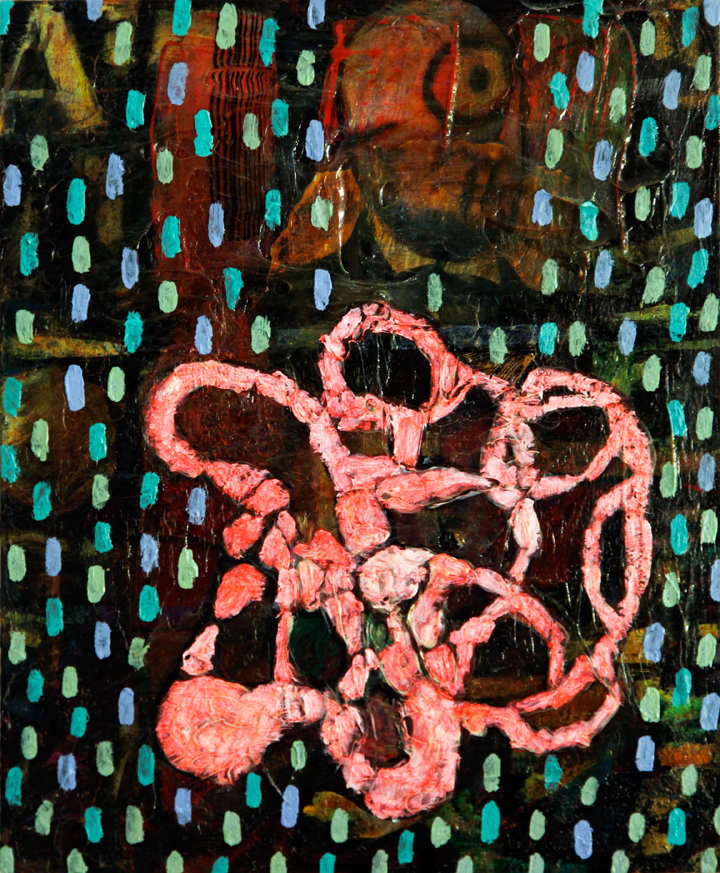 "WWAD (What would Abe do?)" 20" x 16" multimedia on canvas
"WWAD (What would Abe do?)" 20" x 16" multimedia on canvas
ARTIST STATEMENT
Anyone can draw Dim Tim.
Two ovals and a dot.
Three lines.
Everything else is MORE.
He does not OBEY.
He is N+1.
ON TECHNIQUE & METHODS
I employed a breadth of technical means to execute this series of paintings. The materials include inks, varnishes, acrylic paints and pigments from quality sources, mediums, and a range of substrates, from store-bought stretchers to handmade panels of rare woods. A few pieces have print or found elements. The paintings are brought along sculpturally, additively, in general, although each one is treated as a unique undertaking. For the most part, all elements of the production processes are applied with the art’s longevity seriously considered. In a few cases, expressionist and instinctual concerns outweigh others.
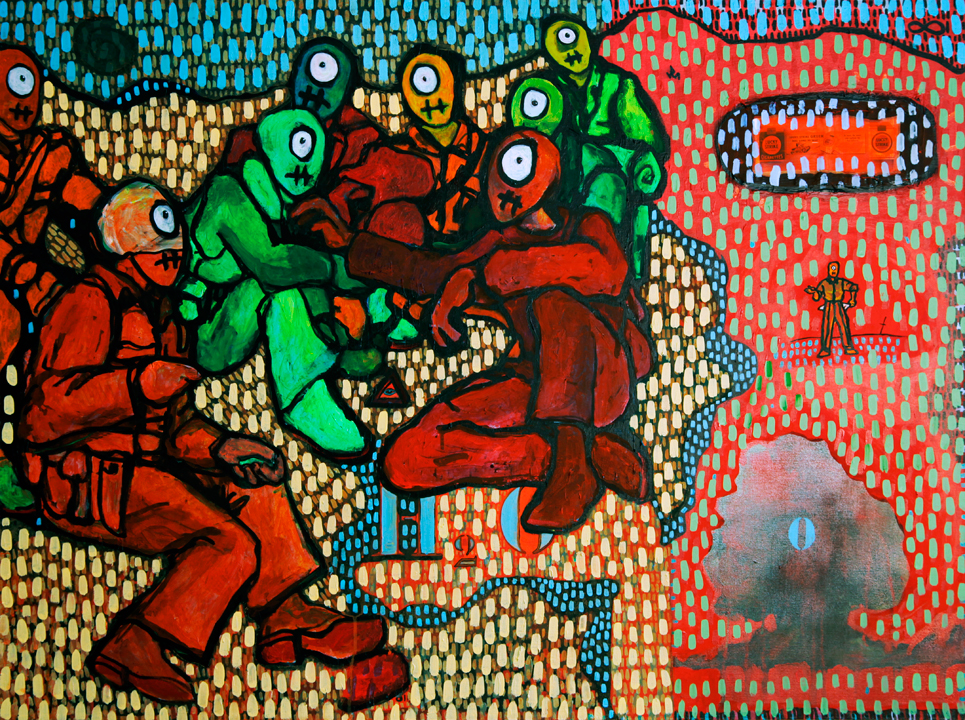 "Occupation" 36" x 48" acrylic, ink and collage on canvas
"Occupation" 36" x 48" acrylic, ink and collage on canvas
In Dimensionist or 4D painting, the art’s timeline is an important factor. The Dim Tim series brings to a new point of origin (not to be confused with a culmination) a cycle of many series. As such, representative artworks are included in the body of work. Some have taken years to complete. Others are brand new, reflecting what’s happening now. The Dim Tim series is complemented by a library of texts, such as Notes on Dimensional Time, Transthesis and Cursor, which serve to provide the viewer with as much context as she might desire to inform the direct experience provided by the encounter with the paintings, themselves. Documentation of the paintings’ progression and the manner in which they configure with one another is ample, and available on request.
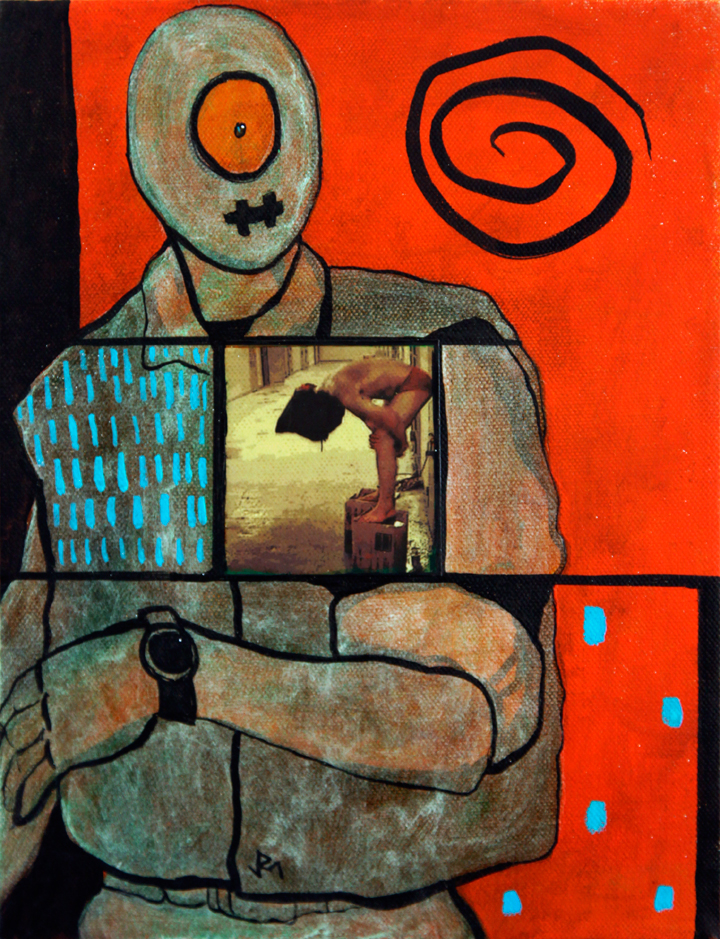 "Torture" 12" x 9" acrylic, ink and digital print on canvas
"Torture" 12" x 9" acrylic, ink and digital print on canvas
Each painting presents a layered, dimensional narrative. Some are more complex than others. The “language” of my paintings has evolved over decades. It includes symbols and coded signs, patterns, embedded stories attached to figures represented and integrated into the surfaces. At some point the narrative(s) seemed to me to evidence a degree of self-propulsion. The paintings, as they emerge, take on an instructional or directive quality, providing me clear indications about what is necessary next. I have found this phenomenon to be common among creative forms that develop big narratives, based on anecdotes shared by the composers of such stories. The subject matter for the paintings becomes a kind of play, consisting of facets of choice, unfolding, or to think of it another way – revelation, and currency. Throughout the narrative I intersperse autobiography, usually intentionally, sometimes by accident.
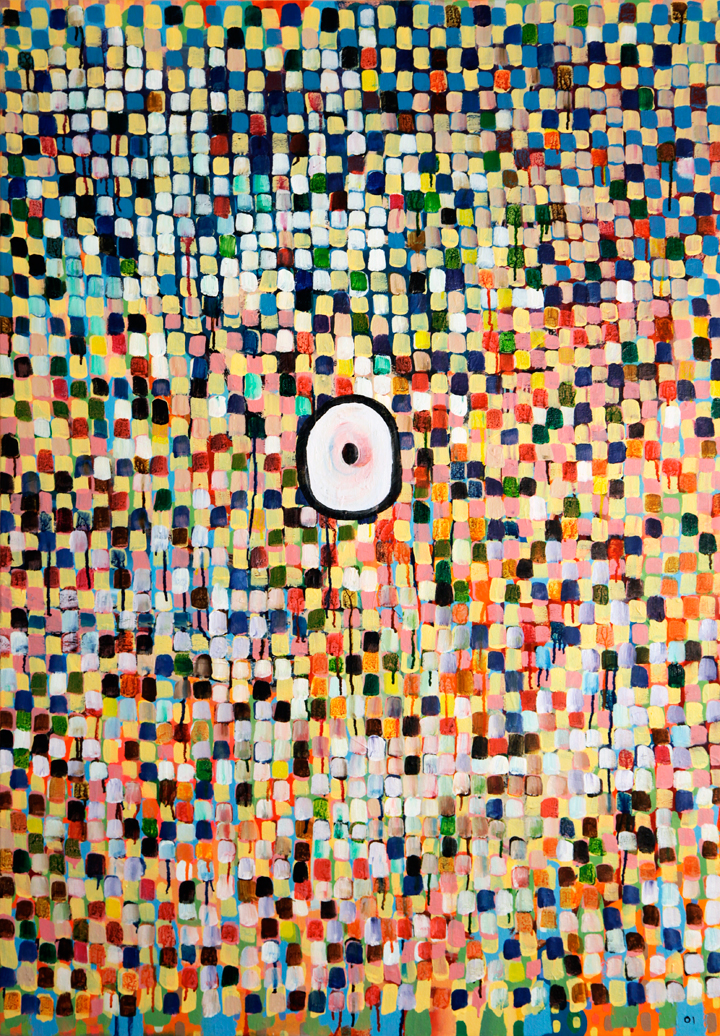 "ZONG" 52" x 36" acrylic and ink on canvas
"ZONG" 52" x 36" acrylic and ink on canvas
ACKNOWLEDGEMENTS
The Dim Tim series owes much to the excellence of instruction I have received: starting with my mentor at Notre Dame, Don Vogl; the artists who brought me along during my years in Santa Fe, including Richard Tuttle, Elias Rivera, Janet Lippincott, Woody Gwyn, Marty Horowitz and others. My instructors at Claremont Graduate University, David Pagel, Carmine Iannacone, Gary Lang, Michael Brewster, John Millei and David Amico; the philosophers of EGS, Freidrich Kittler (to whom “DIM TIM” is dedicated), Alain Badiou, Sylvere Lotringer, Giorgio Agamben, Wolfgang Schirmacher and others, and to the artists here in New York City who have inspired and helped me in many ways, Joseph Nechvatal, Dumitru Gorzo, Shane Kennedy, and Liv Mette Larsen. The historical artists I wish to cite as references include Turner, Judd, Singer-Sargent, Pollack and T.C. Cannon.
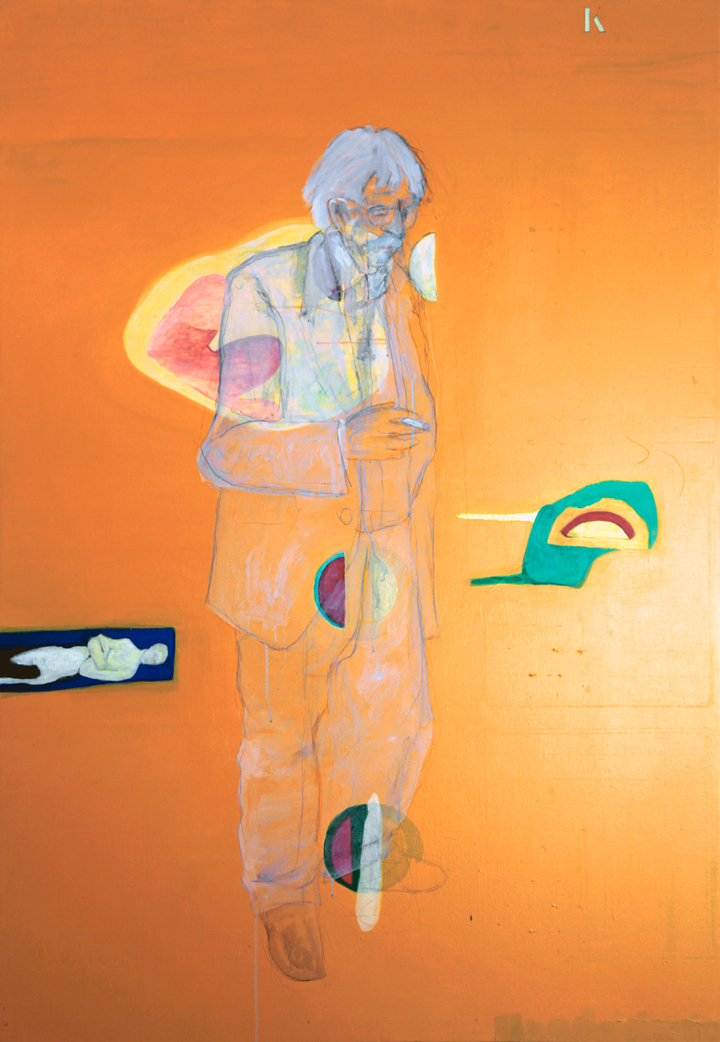 "Kittler" 64" x 44" acrylic, ink and pencil on canvas
"Kittler" 64" x 44" acrylic, ink and pencil on canvas
 admin | Comments Off |
admin | Comments Off |  Dim Tim,
Dim Tim,  Dimensionist Art,
Dimensionist Art,  Joseph Nechvatal,
Joseph Nechvatal,  Paul McLean in
Paul McLean in  Information,
Information,  exhibition
exhibition